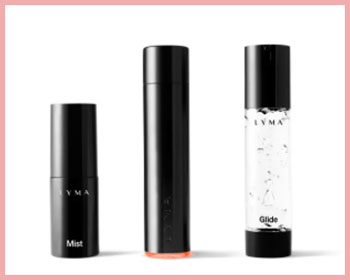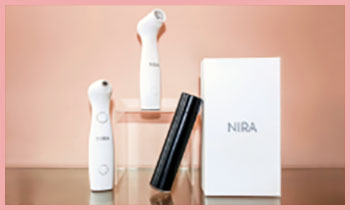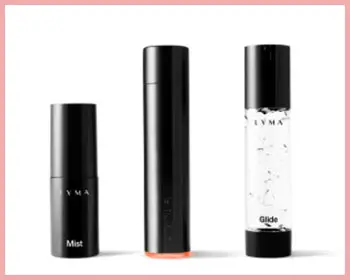I’ve spent years chasing that elusive glow, battling fine lines and uneven texture. When I stumbled upon the LYMA and NIRA lasers, I was intrigued—could these at-home devices really rival professional treatments? In this article, I’ll share my firsthand experience comparing these two anti-aging powerhouses, breaking down their pros, cons, and key features in a conversational, analytical way. My goal? To help you decide which laser fits your skincare needs and budget, so you can confidently invest in your skin’s future.
Comparison Table: LYMA Laser vs. NIRA Laser
| Feature | LYMA Laser | NIRA Laser |
| Technology | Cold laser (LLLT, 808nm) | Non-fractional laser (1450nm) |
| Treatment Time | 15–30 min/day | 2–5 min/day |
| Price | ~$2,695 | ~$599–$899 |
| Clinical Evidence | Limited; customer-reported | Independent studies, FDA-cleared |
| Skin Concerns | Wrinkles, texture, redness, scars | Wrinkles, fine lines, tone |
| Pain Level | None | Mild warmth |
| Skin Tone Compatibility | All skin tones | All skin tones |
| Downtime | None | None |
| Battery Life | ~4 hours, needs weekly charging | Long-lasting, USB-C charging |
| Warranty | 2 years | 1 year, 90-day money-back |
Why I Got Curious About At-Home Lasers
Aging skin is a universal struggle. As I hit my late 30s, I noticed crow’s feet creeping in and my once-plump cheeks losing their bounce. I’d tried serums, facials, and even Botox, but I wanted something more sustainable—without the clinic price tag. That’s when at-home laser devices caught my eye. The LYMA and NIRA lasers promised professional-grade results from my bathroom, but they’re wildly different in approach, cost, and outcomes. I decided to put them to the test, using each for three months to see which one truly delivers.
LYMA Laser: The Luxury Contender
The LYMA Laser feels like a splurge the moment you unbox it. It’s sleek, heavy, and screams high-end. Marketed as a “clinic-grade” cold laser, it uses low-level laser therapy (LLLT) at an 808nm wavelength to stimulate skin cells without heat. The idea? Boost collagen, elastin, and ATP (your cells’ energy currency) to rejuvenate skin from within. It’s FDA-cleared for home use and claims to tackle wrinkles, redness, scars, and even rosacea, all while being safe for every skin tone.
My Experience with LYMA

Using the LYMA became a nightly ritual. After cleansing, I’d spritz on their Oxygen Mist and apply the Glide Gel (or sometimes a face oil) to help the device move smoothly.
The process is mindless—you glide it over your face, neck, or décolletage for 15 to 30 minutes daily. For specific spots like crow’s feet, you hold it still for three minutes.
There’s no pain, no heat, just a faint red glow from the device’s LEDs.
After three months, my skin felt smoother and looked brighter. The fine lines around my eyes softened slightly, and my complexion had a subtle glow. My décolletage, often neglected, showed fewer creases. But the results weren’t dramatic. I noticed the biggest difference in texture—my skin felt plumper, almost like it was better hydrated. However, my stubborn forehead lines didn’t budge much, and I wondered if I needed more time or if my expectations were too high.
Pros of LYMA Laser
- Pain-free and non-invasive: No redness or irritation, even on sensitive skin.
- Versatile: Works on face, neck, body, and even scars or pigmentation.
- Safe for all skin tones: No risk of hyperpigmentation, unlike some clinic lasers.
- Luxurious experience: Feels like a spa treatment at home.
- Long lifespan: Built to last 10 years with a 2-year warranty.
Cons of LYMA Laser
- Steep price: At $2,695, it’s a major investment.
- Time-intensive: 15–30 minutes daily for three months is a commitment.
- Limited clinical evidence: Relies heavily on customer reviews, not independent studies.
- Subtle results: Improvements are gradual, not transformative.
- Battery quirks: Needs charging after four hours, which can disrupt routines.
NIRA Laser: The Practical Powerhouse
The NIRA Pro Laser, by contrast, feels like a futuristic gadget—compact, lightweight, and no-nonsense. It uses non-fractional laser therapy at a 1450nm wavelength, heating the dermis to trigger collagen production via a controlled damage response. It’s FDA-cleared, backed by clinical studies, and designed for quick, targeted treatments on wrinkles, fine lines, and sagging skin. At $599–$899, it’s far more budget-friendly than LYMA.
My Experience with NIRA

The NIRA is a breeze to use. You stamp it across clean, dry skin, waiting for a beep to move to the next spot.
Each session takes 2–5 minutes, perfect for my busy mornings.
It has five intensity levels; I started at level three, feeling a mild warmth but no pain. By month three, I was at level five, and my crow’s feet were noticeably softer.
My under-eye bags looked less puffy, and my jawline felt slightly firmer. The results were more visible than with LYMA, especially for wrinkles, but I didn’t see much improvement in overall tone or texture.
Pros of NIRA Laser
- Affordable: At $599–$899, it’s a fraction of LYMA’s cost.
- Quick sessions: 2–5 minutes daily fits any schedule.
- Clinically proven: Independent studies show wrinkle reduction in 90 days.
- Targeted results: Excels at smoothing fine lines and crow’s feet.
- Portable: Compact design with USB-C charging is travel-friendly.
Cons of NIRA Laser
- Mild discomfort: Higher settings can feel warm, which some might dislike.
- Limited scope: Focuses on wrinkles, less effective for redness or scars.
- Smaller treatment area: Pro model covers more, but Precision is better for eyes.
- Shorter warranty: 1 year vs. LYMA’s 2 years.
- Requires consistency: Skipping days delays results.
Breaking Down the Tech: Cold vs. Non-Fractional Lasers
The LYMA and NIRA lasers work differently at a cellular level, which explains their unique strengths. LYMA’s cold laser (LLLT) uses photobiomodulation to energize cells, boosting ATP and collagen without damaging the skin. It’s like giving your cells a Red Bull—they work harder to repair and rejuvenate. This makes it ideal for sensitive skin or conditions like rosacea, as there’s no heat or trauma.
NIRA’s non-fractional laser, however, uses controlled heat to stress the dermis, triggering a healing response that ramps up collagen production. It’s more targeted, penetrating deeper (1450nm vs. LYMA’s 808nm) to remodel skin structure. This approach is proven for wrinkles but less versatile for broader concerns like redness or scarring. The heat also means it’s slightly less comfortable, though still painless.
Read More: Solawave vs. Lightstim
Cost vs. Value: Is the Price Tag Justified?
Let’s talk money. The LYMA’s $2,695 price made me wince. It comes with a mist and gel, but you’re mostly paying for the tech and luxury branding. If you use it daily for 10 years, it’s about $0.74 per day—comparable to a monthly facial. But the time commitment and subtle results made me question its value for my needs. If you have rosacea or prioritize texture, it might be worth it.
The NIRA, at $599–$899, feels like a steal. It’s less than a single in-office laser session, and the clinical backing gives me confidence. The quick sessions and visible wrinkle reduction make it a better fit for my lifestyle. If budget is a factor, NIRA wins hands-down.
Time Commitment: A Real-World Test
I’m a busy person—work, kids, and a Netflix addiction don’t leave much room for lengthy routines. LYMA’s 15–30 minutes daily felt like a chore, especially on tired evenings. I often zoned out watching TV, which made it bearable, but it’s not ideal for everyone. NIRA’s 2–5 minutes, though, slotted seamlessly into my morning routine. I’d use it while my coffee brewed, and I never felt burdened.
Results: What I Saw After Three Months
After three months with each device, here’s the scoop. LYMA gave me smoother, brighter skin with a subtle plumpness. My décolletage looked better, and my texture improved, but wrinkles didn’t fade much. It’s great for overall skin health but not a wrinkle eraser. NIRA, however, delivered on fine lines. My crow’s feet and under-eye wrinkles softened significantly, and my jawline looked tighter. It didn’t help with tone or redness, but for targeted aging concerns, it’s a champ.
Skin Tone Safety: A Major Plus
Both devices shine here. LYMA’s cold laser is zero-damage, making it safe for all skin tones, including darker ones prone to hyperpigmentation from traditional lasers. NIRA’s non-fractional tech is also FDA-cleared for all skin tones, with built-in safety features like temperature monitoring to prevent burns. I have medium skin, and neither caused irritation or discoloration—a huge relief.
Portability and Design: Everyday Practicality
The LYMA is a statement piece—gorgeous but bulky. It’s cordless, but the battery needs charging weekly, which I forgot more than once. The NIRA is sleeker and lighter, with a USB-C cable that’s easy to pack. I took it on a work trip, and it didn’t hog suitcase space. For travel, NIRA’s design is more practical.
Clinical Evidence: Trusting the Science
This is where NIRA pulls ahead. Its clinical studies, like one with 76 participants showing wrinkle reduction in 90 days, gave me confidence. LYMA’s evidence is thinner—mostly customer testimonials and a small study on wound healing. While LYMA’s claims are compelling, the lack of robust data made me skeptical. If you’re a science nerd like me, NIRA’s transparency is reassuring.
- Who Should Choose LYMA?
The LYMA is for you if you want a luxurious, multi-purpose device. It’s ideal for sensitive skin, rosacea, or scarring, and if you enjoy a spa-like ritual, the time commitment won’t faze you. It’s best for those with a big budget who value subtle, long-term improvements in texture and tone. If you’re after dramatic wrinkle reduction, though, you might be disappointed.
- Who Should Choose NIRA?
NIRA is your pick if you’re practical and results-driven. It’s perfect for busy people who want quick, targeted wrinkle reduction without breaking the bank. If fine lines and sagging are your main concerns, and you’re okay with mild warmth, NIRA delivers. It’s less versatile than LYMA but more effective for aging-specific goals.
- My Verdict: Which Laser Wins?
Choosing between LYMA and NIRA depends on your priorities. For me, NIRA was the winner. Its affordability, quick sessions, and visible wrinkle reduction fit my life better. LYMA’s luxury and versatility are tempting, but the price and time commitment felt steep for the results I saw. Your skin goals, budget, and patience will guide your choice. Both are solid, but NIRA’s practicality stole my heart.
Frequently Asked Questions (FAQ)
It depends on your needs. NIRA excels for quick, targeted wrinkle reduction and affordability. LYMA is better for overall skin health, texture, and versatility but costs more and takes longer.
If you have the budget and time for daily 15–30-minute sessions, LYMA’s subtle improvements in texture and tone can be worth it, especially for sensitive skin or rosacea. Otherwise, it’s a splurge.
NIRA is best for wrinkles and fine lines due to its clinical backing and targeted results. LYMA suits broader anti-aging needs like texture and redness but requires more commitment.
Yes, it worked for me. After 90 days, my crow’s feet and under-eye wrinkles softened noticeably. Clinical studies back its effectiveness for wrinkle reduction with consistent use.
Also Read: Barbara Sturm vs. Augustinus Bader
Conclusion: Your Path to Radiant Skin
You deserve skin that makes you feel confident, and both the LYMA and NIRA lasers can help you get there. I’ve shared my journey to help you weigh their pros, cons, and real-world results. Whether you choose LYMA’s luxurious, all-in-one approach or NIRA’s quick, budget-friendly precision, consistency is key. Pick the one that fits your life, and you’ll be one step closer to that youthful glow we’re all chasing.

